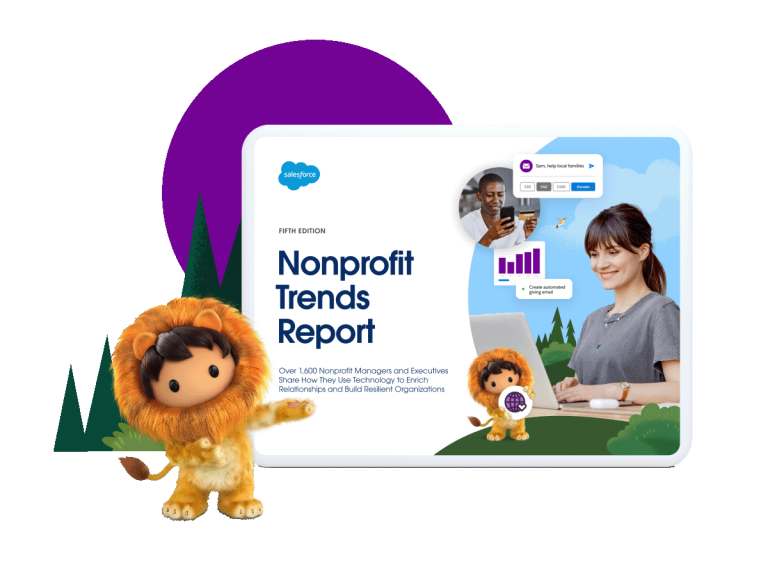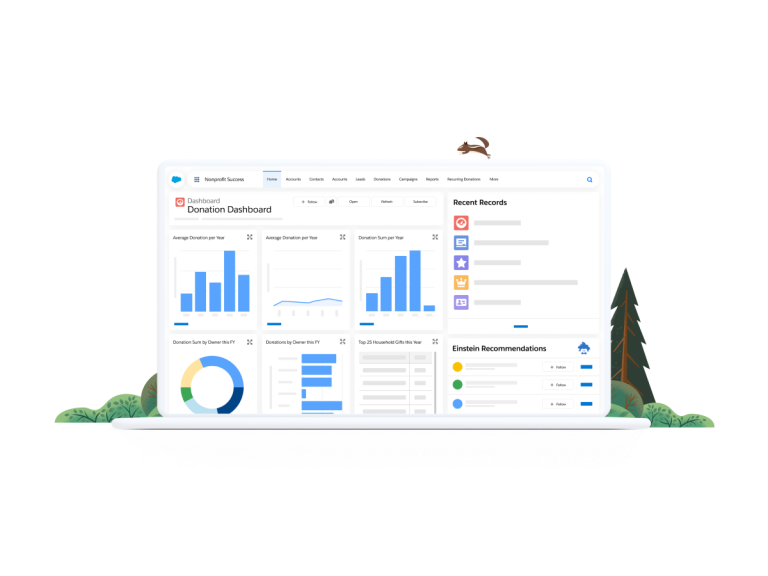Case managers are nonprofit front liners, working directly with clients. When the frontlines have incomplete or unclear information on a case, it can hinder a nonprofit’s mission. That’s why effective case management is crucial. By pairing a systematic case management process with methodical case strategies, organizations can track progress and ensure an optimal client experience.
In this guide, we’ll explain what a case management process is and present different case management strategies you can implement to move the focus from administrative tasks to helping those in need.
What is a case management process?
Creating a successful case management process begins with a sound understanding of the core fundamentals and challenges of nonprofit case management. To determine whether your organization is managing cases as effectively as possible, assess your process by answering the following.
Your case management process should offer:
- A person-centered approach for case assessment centered on the needs, preferences, and goals of the individual, rather than the needs of the organization.
- Collaboration and coordination with other agencies, service providers, and community resources to ensure that your client’s needs are met to deliver whole-person care.
- Advocacy for your clients to ensure their rights are protected and their voices are heard.
- Empowerment for clients to take an active role in their care and decision-making.
- Cultural competence and sensitivity to the diverse needs and backgrounds of clients.
- Confidentiality and privacy for clients and their personal information.
- Professionalism with the highest level of ethical standards.
If your process is missing any of the points above, you may be struggling with some common case management challenges, specifically when it comes to manual case management.
The difficulties of manual case management
Constant analysis, evaluation, and improvement are the keys to efficient case management processes, but none of that is possible with a manual system.
First, a manual case management process may result in an inefficient use of staff time. When staff spends a significant amount of time on administrative tasks such as data entry and documentation, they have less time to spend working directly with clients on their care plans. Manual data entry and document management is an inherently error-prone process that can cost your organization valuable time and resources. Plus, with case managers working with many clients, manual case management can become overwhelming and lead to staff burnout.
Manual case management processes that lack a central database or system can also make it challenging to track the overall progress of cases and ensure all necessary information is available when needed. A full view of clients is a must due to the unpredictable, complex nature of cases and the speed with which case managers often have to correct and deviate to dodge unnecessary escalations and interventions.
Not having a clear picture of the effectiveness of existing efforts or a compass for the road ahead can limit an organization’s ability to identify trends, determine areas for improvement, and make more informed decisions.
To overcome these challenges, nonprofits need clear, well-defined case management processes and strategies to ensure their clients receive the highest quality care and support.

Report
The Nonprofit Trends Report
Learn how nonprofits are achieving success and keeping employees engaged.
Case management strategies for nonprofits
To help your organization avoid the challenges of a manual case management process and manage cases as effectively and efficiently as possible, you will need some sound strategies.
Nonprofit case management strategies could include:
- Assessing an individual’s needs and preferences — context is key in defining fields and gathering crucial information for data collection.
- Developing a flexible plan of care tailored to the individual’s needs and long term goals when you meet the clients.
- Coordinating services and resources from various agencies and providers to gain maximum flexibility and a strong support system.
- Informing clients of progress and empowering them to take an active role in their decision-making and desired outcome.
- Advocating for your clients and ensuring their rights are protected, their personal information is kept confidential, and their diverse needs and backgrounds are respected by all involved organizations.
The most important strategy, however, is moving your nonprofit beyond conventional workflow management models. Old-school nonprofit workflows are designed to handle predictable and repetitive processes. But cases based on human interaction rarely fall into routine patterns. Nuanced, person-centered case management strategies that focus on the unique needs of each individual are the answer. To do this, you’re going to need good data.
Effective case management strategies in action
California Human Development (CHD), a nonprofit that supports approximately 25,000 low-income individuals per year in 31 Northern California counties, has about 160 employees working in 20 offices. CHD previously struggled with managing client data using Excel spreadsheets and paper case files. This made it difficult for staff to analyze and report on data, especially given the organization’s multiple locations and data silos. As a result, staff spent a significant amount of time collecting information from various sources and preparing reports.
When CHD transitioned to a digital case management system, they found remarkable benefits. Good data allowed them to:
- Focus more on clients with less time required to complete certain tasks or prepare reports.
- Earn funding by projecting needs over time.
- Increase impact by identifying trends, shifting resources, and refining or developing new strategies accordingly.
With a data-driven plan of care in place, organizations can monitor individual progress and adjust plans of care as needed using in-depth analytics and actionable insights. The ultimate goal, of course, is to provide advocacy and support and ensure individuals’ rights — plus the rights of the client’s family and any other involved parties — are protected.
Finally, case managers should encourage individuals to be independent and autonomous throughout the process, taking an active role in their own care and decision-making.
Much like CHD, Wolverine Human Services has also seen impact gains — and gain in staff time — from calculated case management strategies.
Wolverine is the largest child welfare and juvenile justice agency in Michigan. They care for the most vulnerable young people in the state and have long been a crucial resource for children and families in crisis. When children are removed from their homes due to abuse or neglect, they often turn to Wolverine for help. The agency also works with families looking to foster children and provides targeted support to at-risk youth in its highly regarded rehabilitation program.
However, Wolverine has struggled with cumbersome manual processes that have hindered its ability to truly make a difference. Recognizing this, the agency sought to streamline its operations and increase its impact. They did so with the following strategies.
Create frictionless workflow.
By eliminating multiple paper forms and creating a single point of entry for all new stakeholders — whether children, staff, or care providers — Wolverine saw an outsized improvement in operating efficiency. Individuals completing a web form were assigned a score which allowed the agency to connect them to the appropriate pathway and care provider. This led to a boost in staff morale and gave them a common goal to work toward.
Systemize processes and procedures.
Wolverine formulated the steps taken each time a new child arrived. This allowed for quick action and freedom from reinventing the wheel — eliminating time spent on data entry rather than on children.
Automation for the win.
With automation, inquiries no longer get lost in the shuffle. Any inquiry made through Wolverine’s website, for example, is immediately and automatically assigned to staff for action within two hours. This has halved the foster care licensing process from 12-16 months to seven months.
Connect fundraising and programs.
Wolverine expanded its capacity and responsiveness to opportunities using digital functions like reports and dashboards. This allowed teams to track submissions, identify upcoming grants, and distribute work. As a result, grant submissions have increased 20-fold. Additionally, the team has access to marketing campaign data to help target, reach, and better understand how people are responding to content being shared.
CHD and Wolverine built comprehensive case management processes and strategies to move their nonprofits forward. But they didn’t do it alone.

Article
The Complete Guide to Nonprofit KPIs
Understand the key performance indicators that drive nonprofit performance.
How Salesforce can help
As the front line of nonprofits, case management professionals play a crucial role in helping those in need. They provide empathy, organization, patience, and effective communication. Case management software can help case managers with developing these skills as well as streamline their workload and free up time to focus on what they do best: working with clients to improve their lives.
Access to tools like Salesforce’s Nonprofit Cloud Case Management platform can help case managers organize and document administrative aspects of their job that can sometimes be a burden. But with the right tools, case managers can log accurate and accessible case notes, create case strategies, resolve issues throughout a client’s journey, track progress, and ultimately ensure an optimal client experience.
An effective case management strategy is the key, not only to helping nonprofit organizations grow at scale but, more importantly, to help them champion the people they support.
